Brannon R.M.
Table of contents :
Acknowledgments……Page 5
Preface……Page 17
1. Introduction……Page 19
STRUCTURES and SUPERSTRUCTURES……Page 20
What is a scalar? What is a vector?……Page 23
What is a tensor?……Page 24
The stress tensor……Page 27
The deformation gradient tensor……Page 29
Vector and Tensor notation – philosophy……Page 30
2. Terminology from functional analysis……Page 32
Definition of a matrix……Page 39
SPECIAL CASE: a matrix times an array……Page 40
EXAMPLE:……Page 41
The identity matrix……Page 43
Derivatives of vector and matrix expressions……Page 44
Derivative of an array with respect to itself……Page 45
Derivative of a matrix with respect to itself……Page 46
The inner product of two column matrices……Page 47
Derivatives of the inner product:……Page 48
Derivative of the trace……Page 49
Derivative of the matrix inner product……Page 50
Magnitudes and positivity property of the inner product……Page 51
Norms……Page 52
Derivative of the energy norm……Page 53
The e-d (E-delta) identity……Page 54
The e-d (E-delta) identity with multiple summed indices……Page 56
Determinant of a square matrix……Page 57
More about cofactors……Page 60
Cofactor-inverse relationship……Page 61
Derivative of a determinant (IMPORTANT)……Page 62
Rates of determinants……Page 63
Matrix invariants……Page 64
Positive definite……Page 65
The cofactor-determinant connection……Page 66
Eigenvalues and eigenvectors……Page 67
Similarity transformations……Page 69
Finding eigenvectors by using the adjugate……Page 70
Eigenprojectors……Page 71
Finding eigenprojectors without finding eigenvectors…….Page 72
Other choices for the base vectors……Page 73
Basis expansion of a vector……Page 74
Summation convention – details……Page 75
Don’t forget what repeated indices really mean……Page 76
Further special-situation summation rules……Page 77
BEWARE: avoid implicit sums as independent variables……Page 78
Reading index STRUCTURE, not index SYMBOLS……Page 79
Suspending the summation convention……Page 80
Combining indicial equations……Page 81
Index-changing properties of the Kronecker delta……Page 82
Tensor invariant operations……Page 87
GOAL: Define, cite properties, show application to find angle between two vectors, show application to decide if a vector is zero…….Page 89
GOAL: Explain that you can’t define division by vectors, but there is an extended viewpoint that is similar…….Page 90
GOAL: Show that the ith component of a vector can be found by dotting that vector by the ith base vector…….Page 91
GOAL: Define, show identities……Page 92
GOAL: Find the scalar component of one vector in the direction of another…….Page 93
GOAL: Cite important special-case of the cross product between base vectors…….Page 94
GOAL: Define, cite properties, show application to deciding if three vectors are linearly independent…….Page 96
GOAL: Cite the triple scalar product between right-handed base vectors and argue against redefining the permutation symbol for other types of basis triads (instead, advocate using different values for the permutation tensor components)…….Page 97
GOAL: Show how to find the part of a vector in the direction of another vector (and clarify distinction between this and finding the scalar component in the direction of a vector)…….Page 98
GOAL: Explain that finding the part of a vector in the direction of another vector is a projection operation, and explain why this projection has “rank 1”…….Page 100
GOAL: Emphasize that the rank-1 and rank-2 projections effectively extract “pieces” of the starting vector that break it down into smaller parts relative to a locally aligned basis…….Page 101
GOAL: Explain oblique (not nearest point) projections onto a plane…….Page 102
GOAL: Explain that the zero operator is a degenerate projector…….Page 103
GOAL: Generalize the “aligned” basis description of a projector to show that the structure is very similar for oblique projections except that the “aligned” basis is non-orthonormal…….Page 104
GOAL: outline most straightforward process, refine notation for the process to be more consistent with curvilinear notation…….Page 106
The vector “signum” function……Page 108
GOAL: Show that orthogonal (nearest point) projections are self-adjoint, whereas oblique projections are not. Set stage for later showing that orthogonal projection tensors are symmetric, whereas oblique projection tensors are not…….Page 109
GOAL: show how to convert a set of vectors into a minimal orthonormal basis that will span the same space as the original set of vectors…….Page 110
The projection theorem……Page 111
7. Tensors……Page 113
GOAL: Explain how vectors share several axiomatic properties in common with smooth scalar-valued functions. Then demonstrate that tensors are quite similar to smooth functions of two variables…….Page 114
GOAL: Set stage for the “linear transformation” definition of a tensor by showing how a matrix arises naturally to characterize ………Page 117
GOAL: Define, cite properties……Page 121
GOAL: Show that a dyad has an associated matrix that is equivalent to the outer product of the vectors. Set stage for making connection between dyads and tensors – both have associated matrices. Dyads are special kinds of tensors…….Page 122
GOAL: define, cite properties……Page 123
GOAL: Define this operation, cite properties, emphasize that scalar multiplication can act on any of the individual vectors forming a dyad…….Page 124
GOAL: Use result of previous section to define a “tensor” to be any dyad or sum of dyads…….Page 125
GOAL: show that expanding an ordinary engineering tensor as a linear combination of the NINE possible ways to form basis dyads is similar in spirit to expanding an ordinary engineering vector as a linear combination of the laboratory orthonormal basis…….Page 126
GOAL: Introduce higher-order tensors……Page 128
GOAL: Define the meaning of Vmn and show that any tensor of class Vmn will have mn components…….Page 129
Comment……Page 132
The transpose of a tensor……Page 133
Dotting a tensor from the left by a vector……Page 134
Dotting a tensor into a tensor (tensor composition)……Page 135
Three kinds of vector and tensor notation……Page 137
GOAL: Explain that there exists a unique tensor that characterizes each function that linearly transforms vectors to vectors…….Page 140
Representation theorem for vector-to-scalar linear functions……Page 141
Advanced Representation Theorem (to be read once you learn about higher-order tensors and the Vmn class notation)……Page 142
Method #2……Page 143
The identity tensor……Page 144
Tensor associated with composition of two linear transformations……Page 145
The power of heuristically consistent notation……Page 146
The COFACTOR tensor……Page 147
Axial tensors (tensor associated with a cross-product)……Page 149
Axial vectors……Page 151
Cramer’s rule for the inverse……Page 152
Derivative of a determinant……Page 153
GOAL:……Page 154
Nonlinear projections do not have a tensor representation……Page 156
Linear orthogonal projectors expressed in terms of dyads……Page 157
IMPORTANT: Finding a projection to a desired target space……Page 159
Self-adjoint (orthogonal) projectors……Page 161
GOAL: Call out some differences between orthogonal and oblique projectors……Page 162
Generalized complementary projectors……Page 163
GOAL: List the properties that a person should look for in a tensor because numerous useful theorems exist for tensors with certain properties…….Page 165
Orthogonal (unitary) tensors……Page 166
Tensor associated with the cross product……Page 169
Cross-products in left-handed and general bases……Page 170
Physical application of axial vectors……Page 172
Symmetric and skew-symmetric tensors……Page 173
Faster way to check for positive definiteness……Page 174
Negative definite and negative semi-definite tensors……Page 175
Isotropic and deviatoric tensors……Page 176
Second-order tensor inner product……Page 177
GOAL: Explain why a commonly used alternative scalar-valued product should be avoided…….Page 178
Fourth-order tensor inner product……Page 179
Fourth-order Sherman-Morrison formula……Page 180
Self-defining notation……Page 181
Useful inner product identities……Page 183
Distinction between an Nth-order tensor and an Nth-rank tensor……Page 184
GOAL: Introduce a simple, but obscure, higher-order tensor operation……Page 185
Symmetric Leafing……Page 187
Change of basis (and coordinate transformations)……Page 188
EXAMPLE……Page 191
Definition of a vector and a tensor……Page 193
Basis coupling tensor……Page 194
What’s the difference between a matrix and a tensor?……Page 195
Example of a “scalar rule” that satisfies tensor invariance……Page 197
Example of a “scalar rule” that violates tensor invariance……Page 198
Example of a 3×3 matrix that does not correspond to a tensor……Page 199
The inertia TENSOR……Page 201
Primitive invariants……Page 203
Characteristic invariants……Page 205
The cofactor in the triple scalar product……Page 207
CASE: invariants of the sum of a tensor plus a dyad……Page 208
Eigenvalue problems……Page 210
Algebraic and geometric multiplicity of eigenvalues……Page 211
Eigenprojectors……Page 213
Equation of a plane……Page 216
Equation of a line……Page 217
Equation of an ellipsoid……Page 218
Example……Page 219
Equation of a general quadric (including hyperboloid)……Page 220
Generalization of the quadratic formula and “completing the square”……Page 221
Special case:……Page 223
The polar decomposition theorem:……Page 224
The *FAST* way to do a polar decomposition in 2D……Page 227
A fast and accurate numerical 3D polar decomposition……Page 228
GOAL: Describe another (less common) multiplicative decomposition that breaks a tensor transformation into two parts, one part that captures size changes and the other part characterizing shape changes…….Page 229
Thermomechanics application……Page 230
GOAL: Describe two competing definitions of isotropy and the relative merits of each…….Page 233
Important consequence……Page 235
Isotropic second-order tensors in 3D space……Page 236
GOAL: Demonstrate that the proper-isotropic space is two dimensional for tensors of class V22, in stark contrast to the result for V23. The strict-isotropic space is one-dimensional…….Page 237
Isotropic fourth-order tensors……Page 240
GOAL: Reiterate the concept of projections by showing an advanced, higher-order, application…….Page 241
Transverse isotropy……Page 242
GOAL: What are structures, and why use them? Motivate writing down operations in purposely abstract, counter-intuitive, notation to ensure that you don’t introduce your own bias into the analysis…….Page 245
Definition of an abstract vector……Page 248
What does this mathematician’s definition of a vector have to do with the definition used in applied mechanics?……Page 250
Alternative inner product structures……Page 251
Some examples of inner product spaces……Page 252
Continuous functions are vectors!……Page 253
Tensors are vectors!……Page 254
Vector subspaces……Page 255
Example: commuting space……Page 256
Abstract contraction and swap (exchange) operators……Page 258
The swap tensor……Page 262
20. Vector and Tensor Visualization……Page 265
GOAL: Describe how to generate Mohr’s circle for a 2×2 matrix that is not necessarily symmetric…….Page 266
Stilted definitions of grad, div, and curl……Page 269
Gradients in curvilinear coordinates……Page 270
When do you NOT have to worry about curvilinear formulas?……Page 272
Spatial gradients of higher-order tensors……Page 274
Product rule for gradient operations……Page 275
Identities involving the “nabla”……Page 277
Compound differential operator notation (and unfortunate pampering)……Page 279
Right and left gradient operations (we love them both!)……Page 280
Casual (non-rigorous) tensor calculus……Page 283
SIDEBAR: “total” and “partial” derivative notation……Page 284
The “nabla” or “del” gradient operator……Page 287
Okay, if the above relation does not hold, does anything LIKE IT hold?……Page 289
Directed derivative……Page 291
EXAMPLE……Page 292
Derivatives in reduced dimension spaces……Page 293
A more physically significant example……Page 297
Series expansion of a nonlinear vector function……Page 298
Exact differentials of one variable……Page 300
Exact differentials of two variables……Page 301
Exact differentials in three dimensions……Page 302
Coupled inexact differentials……Page 303
Integration by parts……Page 304
Leibniz theorem……Page 306
LONG EXAMPLE: conservation of mass……Page 309
Generalized integral formulas for discontinuous integrands……Page 313
23. Closing remarks……Page 314
24. Solved problems……Page 315
REFERENCES……Page 317
INDEX This index is a work in progress. Please notify the author of any critical omissions or errors…….Page 319
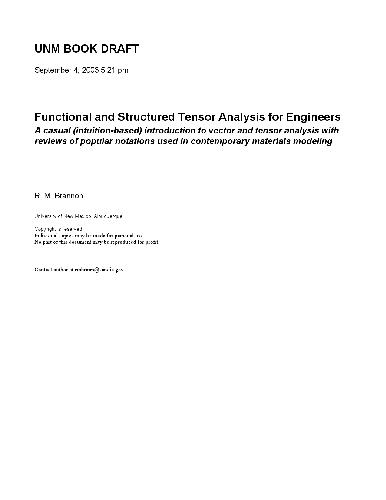
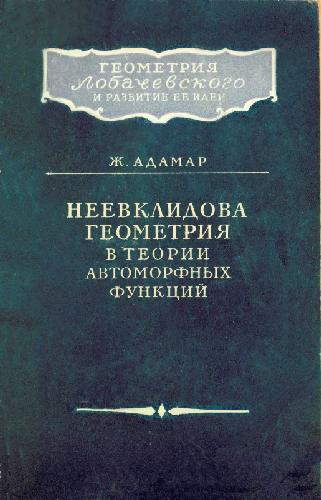
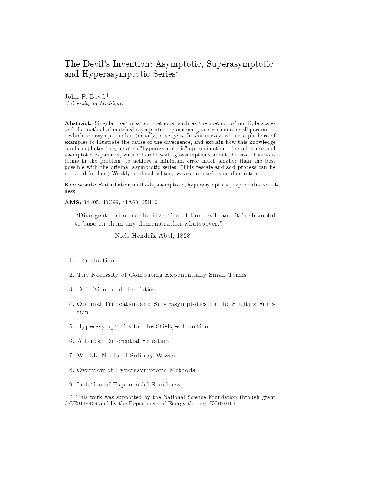

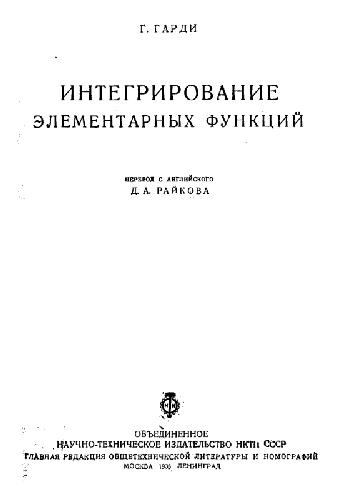
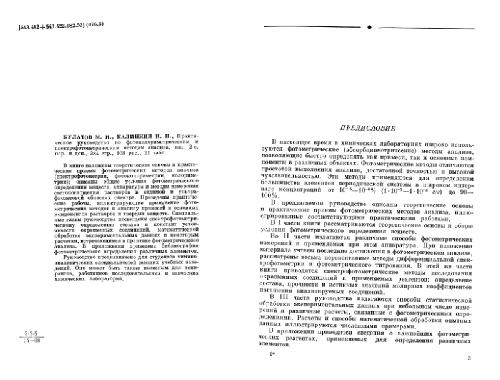
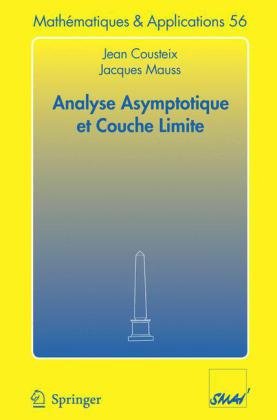
Reviews
There are no reviews yet.